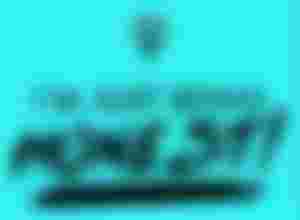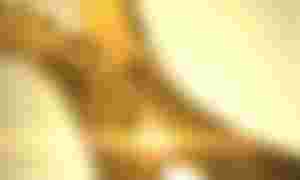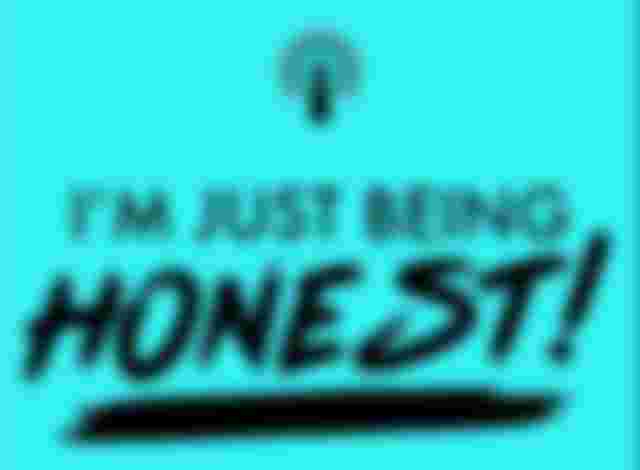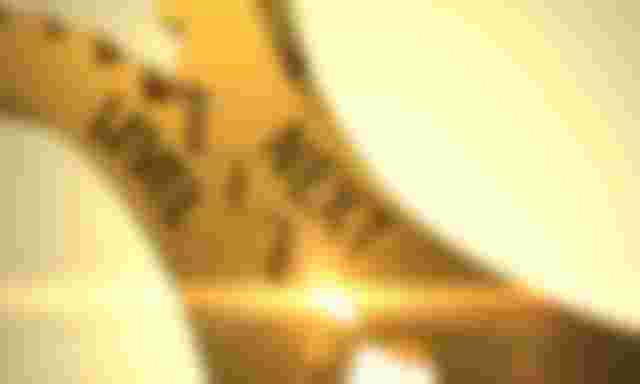This ongoing pandemic has really spelled great trouble for many of us career-driven people, including yours truly. Thankfully, there are really cool side-hustles that we can hop into. For the past months, I’ve been working as a freelance writer in various online writing platforms here and there.
If you’re planning to hop into such an endeavor, let me inform you that you will be prompted to undergo a series of online exams which include some grammar tests, and some essay tests. The former is just a drill in which you will be given multiple choices. But with the essay part, that is where it gets tricky.
You will be tasked to write short essays that pertain to some questions that are highly technical, while some are just a bit silly, in my opinion. Let’s get to know some of those questions and how I answered them. You have to know though, the some of the essays below were failed ones, meaning… I suck at giving those, which made me hop into other platforms which luckily, gave me a passing score, and became their freelance writer.
Let’s get started.
What’s the difference between symmetric key encryption and public key encryption?
I think I was given this question because, in my portfolio, I put the “computer technician, computer programmer” as among my skills. Since I already had enough experience as a technical school teacher,
I answered the question with just a set of stock knowledge:
As a method used to keep messages undecipherable, encryption is used in computerization. This method has basically two classifications: symmetric key encryption and public-key encryption. The concept of this technique revolves around the use of a ciphering and a deciphering key which can be defined as an algorithm that can arrange or rearrange a set of information so that only a certain person can read and understand the information.
While symmetric-key encryption is equipped with only a single key to unlock a certain message, public-key encryption has two keys to decipher the secrets of an encoded text. Symmetric key encryption has already been widely used long before the existence of digital computer equipment. It is used in espionage and in the acts of exchanging corporate secrets in the past generations.
To employ encryption of this type, a single key must be known to the two parties: the sender and the recipient. This key is then used to encrypt and decrypt a message that is meant to be unknown to other individuals. The sender uses this key in encoding a message into an unreadable form. Upon receiving it, the receiver then uses the same key to restore the message into its readable format.
Public key encryption, also known as asymmetric key encryption is a much more modern method and is much more complex. Instead of having just one, it has two keys: a public key and a private key. As their names suggest, the first one can be revealed publicly in contrast to its counterpart which is exclusive only to the sending and receiving parties.
As the sender composes a message, he will use the public key shared by both parties (the sender and the receiver) to encrypt it. This ensures that even though the receiver is not aware of the sender’s private key, he can still decrypt the message using the public key.

Swift and easy… I said, after uploading my essay. But then, I flunked. Why? Because I failed the grammar test that happened before it, the site’s e-mail told me.
So I moved on and applied to another platform in which I was asked to write this essay:
Can you name some books that greatly changed your life after reading them?
The Book of Ecclesiastes, one of the 66 books of the Bible is a write-up that everyone should read. Believed to be authored by Solomon son of David, it is mainly about the futility of most of our lives’ endeavors.
The wisdom it gives has caught the attention of many literary experts and great men of history throughout the generations. Songs and poems that are derived from the words of the said book can be found just about everywhere. What makes this book so engaging is that it clearly points out how a wise person can gain superiority over fools. It also gives the readers insight as to how your own choices can solidly define the outcome of your life.
Comprised of 12 chapters, Ecclesiastes opens up by saying things about the circle of life – how short it is, and how things can quickly vanish as they appear. Its middle chapters speak about how to deal with the world and to get along with other people in the wisest manner possible. As it ends, it motivates a person, specifically a young man to enjoy life and make the most out of it. As it does so, it gives a caution however that every good or bad thing you do would be exposed by the Almighty whom the author believes to be the ultimate judge of all.
For those who want to check if they are getting along with life well enough, the Book of Ecclesiastes is a must, because it can give anyone a clear picture of what living is really all about.

That was an honest opinion. Instead of citing books like “The Bourne Series by Robert Ludlum” or the ones written by Tom Clancy which were my favorite, I risked answering something from the Bible. And guess what? It paid off! I have been working for the platform that asked me that for a few weeks.
Unfortunately, though, I got kicked out after finishing some high-paying projects for them because of some “shady practices” that they found out about my methods. So I moved on and applied to another platform in which I was tasked to do another essay:
What is the best way to wash dishes by hand?
Accomplishing the task in the most convenient way can be done with these steps:
1. Rinse off the leftovers – Since used kitchen utensils are most likely replete with the typical grease and crumbs, plain water must be allowed to run through them first to make sure that they are free from particles that may hinder kitchen detergents from doing their thing effectively.
2. Classify the dishes accordingly – to have a faster rinsing and cleansing act later on, plates, knives, spoons, forks, etc. must be placed according to their kind. This also paves the way for cleaner and better washing results.
3. Foam and lather them up – this is where you let the sponge work with the dish-washing paste. By rubbing the former onto the surfaces of each plate or utensil properly, the greasiness or coarseness of such objects due to sticking food bits can be cleaned easily.
4. Rinse them in running water – Although water on a basin may do the job just fine, rinsing off the foam and lather is best done with running water flowing through the dishes. This is to ensure that the oiliness of the first rinsed dish does not cling to the ones that come after.
The question was a bit silly, in my opinion. Why would I write an essay about washing dishes when I was a computer personnel by training and by profession? Subconsciously, I think I also answered the question in “my own silly way.” As expected, I flunked again… frustrating.
There are countless other platforms on the internet, so why quit now? I told myself.

I signed up for another freelance writing site and was asked this somewhat “sillier” question:
“What is the proper way of making your own bed?”
For me, having a good night's sleep is more important than being able to eat delicious foods. For this reason, I consider the art of bed-making one of the most important household chores in existence. Every other day or so, I let my bed undergo the following processes:
1. Removing the top components that comprise it – In addition to just being a sleeping furniture, I sometimes use my bed as a place for reading and eating. To ensure that my domain for slumber is free from undesirable particles, I make it a habit to remove the pillows, bed sheet and blanket that are on it every 2 to 3 days. I take them outside and give them a proper shaking so they will be a bit cleaner when I put them back again.
2. Dusting off my naked bed – Sometimes I use a vacuum cleaner, sometimes I just use a moist cloth. I own a typical Asian bed made of bamboo poles and slabs. Oftentimes, dust and dirt get accumulated on top of it. To make sure I don’t get the unnecessary skin itchiness at any time, I remove the dirt that might become too big of a problem in the next few days.
3. Putting back the pillows and sheets – Once those unwanted particles are already removed, it’s time to put back the main components that make the bed a place of comfort. I’m not really fond of using thick bed cushions. Instead, I use a padded comforter which should be held in place by some push-pins. I know it sounds a bit unusual for beds to be made that way but I do employ those plastic tipped, tiny things to prevent my comforter from moving into unwanted positions. Basically, I just use 4 push-pins – one for each corner.
4. Securing/tightening the comforter sheet – Varnished bamboo beds are shiny which makes them slippery. So in connection with the push-pin usage, I mentioned in the previous item, 2 of the four pins are a bit tricky to install. I need to give the comforter some considerable pulling to make it tight enough. I don’t make it too tight though, as it would damage the soft fabric in which it’s made of. Once the first of the 2 pins are already in place, preferably near the bed headboard, I then pull the edge of the comforter at the opposing end of the bed and install the other 2 pins.
5. Putting back the pillows and blanket – For me, a bed wouldn’t be deemed as complete if it has only one pillow. I use 3 to be able to sleep comfortably: one for my head, 1 for the left side of the bed, and another for the right side. That’s the usual bed arrangement for my bedroom. At the center of those 3 pillows is my blanket. Of course, I fold it nicely and neatly to give it an appealing and elegant look.
For a few seconds, I stand back and watch an artwork that I consider to be amazing… my freshly made bed.
A work of art? Are you kidding me? Maybe I really did appear as if I’m kidding. Because I waited for days and weeks… but there was no confirmation e-mail. Did I pass? Did I fail? Nobody knows. Maybe that freelance portal found my essay to be too funny to qualify, let alone be sent with a confirmation e-mail.

In frustration, here’s what I did: built my own website, (net-earner.com, which was approved by Google Adsense by the way. S c r 3 \/\/ you, online portals who rejected me, I got a better deal from Google, bwahahahaha.)
And what’s even cooler is that the frustration I felt made me took Read.cash seriously, of which I’m earning a good amount of money every day. Not that big, but something that can feed me great food, and be able to pay my apartment rent (it’s just a cheap apartment, you wanna come and visit?) for months now.
And what’s even coolerer (is there such a word?) is that I met some truly interesting people here, like:
@Jeaneth – my closest friend here. We craft cool strategies by having lengthy chats on how to get high tips from The Bot. So far it’s been working. Thanks, buddy! I’m looking forward to that Youtube channel we’re structuring these days.
To the “Abangers Group” : @Eybyoung @Eirolfeam2 @Laurenceuuu and to the funniest entity in Read.cash: @Ruffa We are not that close (yet), but you people truly make my blogging sessions here very colorful.
And of course, to “Miss J” – ang binibining sinisinta ng aking puso. (Tsarot… cards.) H’wag na nating imention… dahil di-deadmahin rin naman ako. (sobs.)
To sum this all up, this has been a great 4 months for me. Thank you Read.cash, thank you, Jeaneth, thank you Abangers, (and your J-Madam), thank you Sir Marc De Mesel, for the biggest tip I got so far, from a single person.
You can expect to still have me here in the next months, unless of course, when our Dearest Bot kicks me out. Until then…Excelsior!




I don't think you need to send an application to become a freelance writer. In fact, you can even open a job posting for people to send their essays. Then, you will read which proposal is funnier than the one you have. or which writing is more serious than you have ever written.